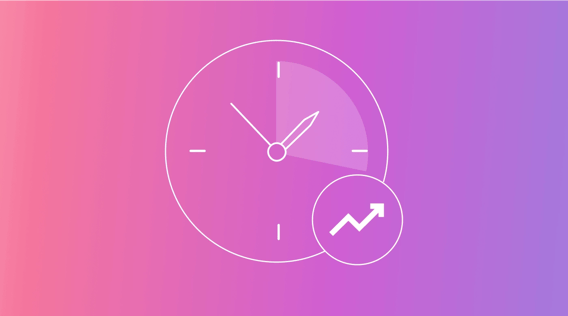Productivity means achieving meaningful results and advancing key objectives.
Unfortunately, we can get so busy trying to keep up that real performance feels out of reach.
Many professionals get stuck in the busyness trap — a relentless cycle of tasks and deadlines. They’re running to stand still rather than moving forward and making a meaningful impact. As a result, they lose the true essence of being productive.
But when you sustain purposeful productivity rather than falling into the busyness trap, you can get essential tasks done and have the mental energy left over to move closer to your goals with every workday.
Sustainable productivity happens when a team maintains the dream of high performance without burning out. Here’s how to make it happen.
What is sustainable productivity?
Sustainable productivity is the ability to remain productive over the long term.
That means two things:
1. You’re consistently productive.
2. Your work life and personal life are balanced enough that you can keep that productivity going.
It sounds straightforward, but many in our modern work culture are far from that balance. They’re overworked and reporting a high degree of burnout.
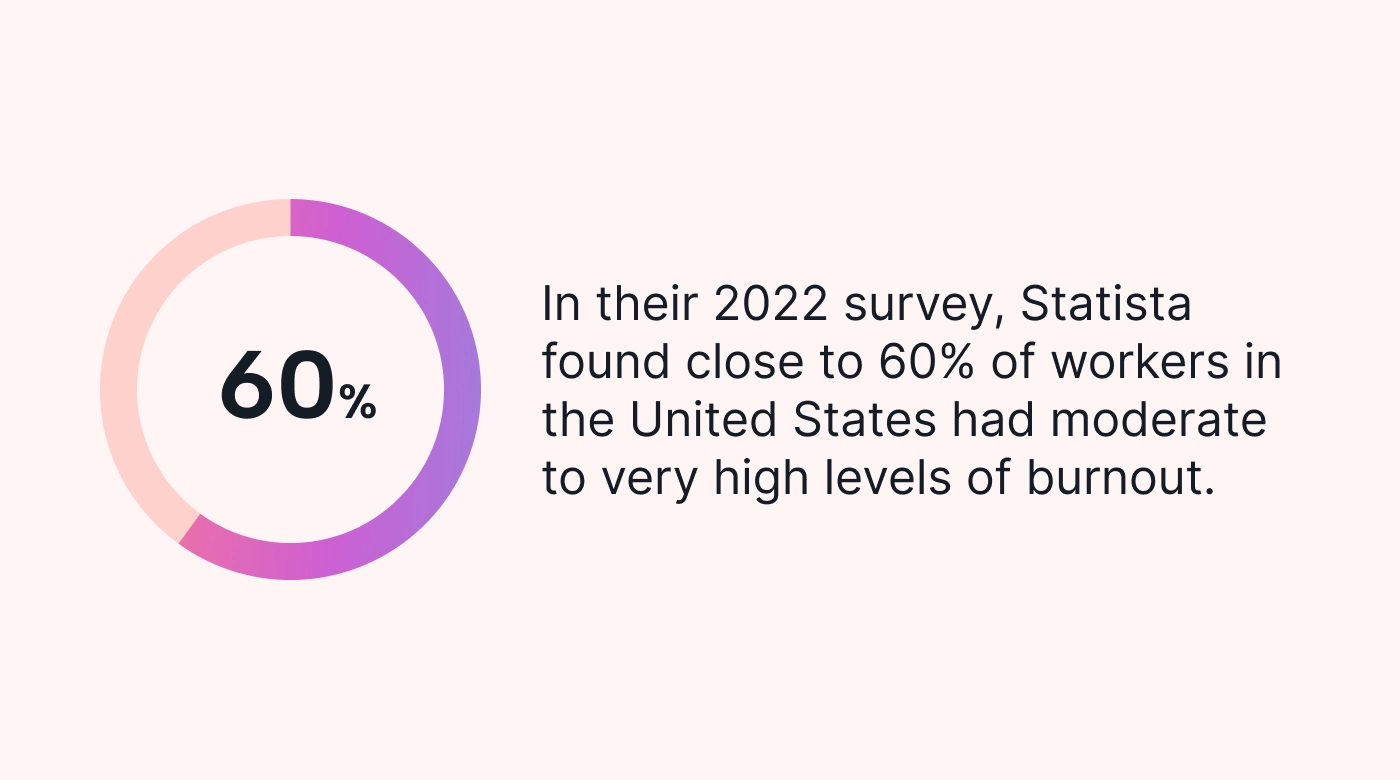 |
Here are a few examples of what sustainable productivity can look like:
- Starting the workday with a 10-minute meditation session for clarity and focus
- Establishing boundaries by creating a separate, clutter-free space for working remotely
- Building an exercise break into the workday for reinvigoration
You can’t work until you drop. So, at the core of productivity that’s sustainable is a balance between efficiency and well-being.
Regardless of how it manifests, this productivity includes:
- Streamlining your work tasks
- Taking care of your body
- Prioritizing your mental health
Sustainable productivity is, therefore, a holistic approach to staying productive. If we want a high productivity level, we have to consider the whole person achieving it, whether that’s ourselves or our teams.
What is not sustainable productivity?
A common misconception in the professional world is that working longer hours directly correlates to more productivity.
But this belief doesn’t account for a key factor: fatigue.
As fatigue sets in, we experience diminishing returns, and the quality and efficiency of our work decreases.
Sustainable productivity upends this notion. It’s not about the time spent working — it’s about the quality of our output when we do work.
For instance, consider a remote employee who works extra hours during their personal time in an attempt to be productive. This may work for a while. But, eventually, they’ll become exhausted and more likely to:
- Make more mistakes
- Struggle to focus
- Experience stress
Another persistent myth is the effectiveness of multitasking. Ample research has proven that when we do more than one task simultaneously, our performance suffers.
The human brain is simply designed for one task at a time. Switching between tasks causes mental blocks and reduces our overall productivity.
Here’s a more effective approach:
- Concentrate on a single task.
- Complete that task to the best of your ability.
- Move on to the next task.
What are the best strategies to achieve sustainable productivity?
Let’s jump into some actionable advice and practical tips for maintaining your productivity for the long haul.
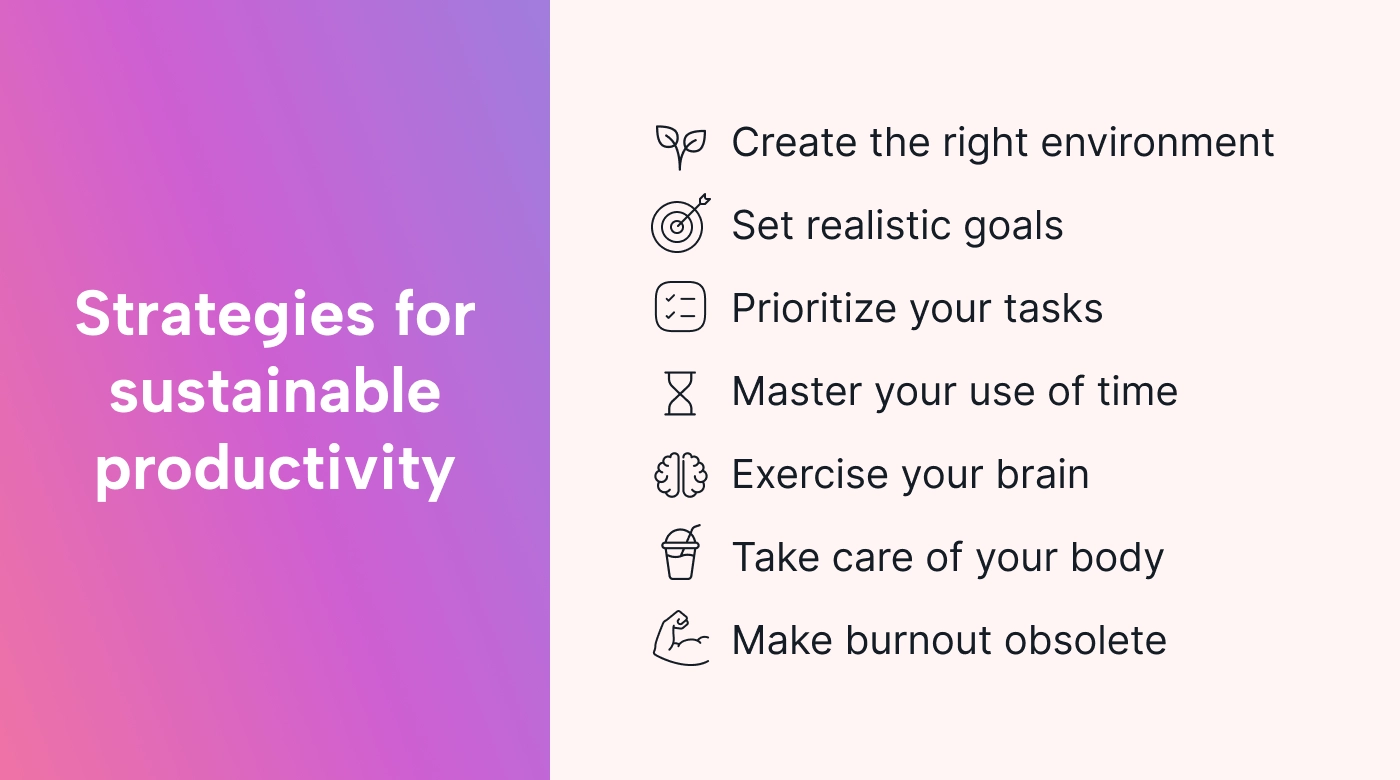 |
1. Create the right environment
Your work environment is part of the foundation that leads to sustainable productivity. And it starts with quality leadership.
Leaders play a critical role in promoting a culture that values wellness and productivity equally.
Start by making sure your leadership leads by example. They should openly communicate the importance of a healthy work-life balance. And they shouldn’t just recommend that staff take regular breaks and prioritize their mental health — they should model those behaviors themselves.
The physical environment is important, too. It goes deeper than just comfortable chairs and ergonomics. A clutter-free, inspiring workspace can also be a morale booster.
Incorporating natural elements into the office can create a more relaxing environment.
For example, you can:
- Add indoor plants
- Maximize natural light
- Use colors and materials that remind you of the outdoors
Lastly, promote regular check-ins with team members to discuss not just their work progress but also aspects of their well-being.
2. Set realistic goals
A simple but powerful acronym when it comes to setting goals is SMART.
SMART goals are:
- Specific
- Measurable
- Achievable
- Relevant
- Time-bound
Each of these factors is invaluable for goal-setting. But it’s just as important to align your goals with your core values and purpose.
Low-value work doesn’t make us productive or happy.
Attach your goals to something bigger, such as a long-term career path or a certain impact you want to have on others. That’ll help ensure you’re focusing on high-priority work and feeling the accomplishment of progress.
Goal setting should be a regular part of your routine. You can set goals at the beginning of each day or week, for instance.
Anticipate challenges right away and make plans for navigating them. This proactive approach will give you a better feeling of control and less stress when the inevitable happens.
Here are a few more tips:
- As circumstances change, adjust your goals accordingly.
- Celebrate your progress along the way.
- Break down large tasks into smaller, more manageable ones.
3. Prioritize your tasks
The Eisenhower Matrix is a powerful tool for task prioritization. It distinguishes between tasks that are important, urgent, both, or neither.
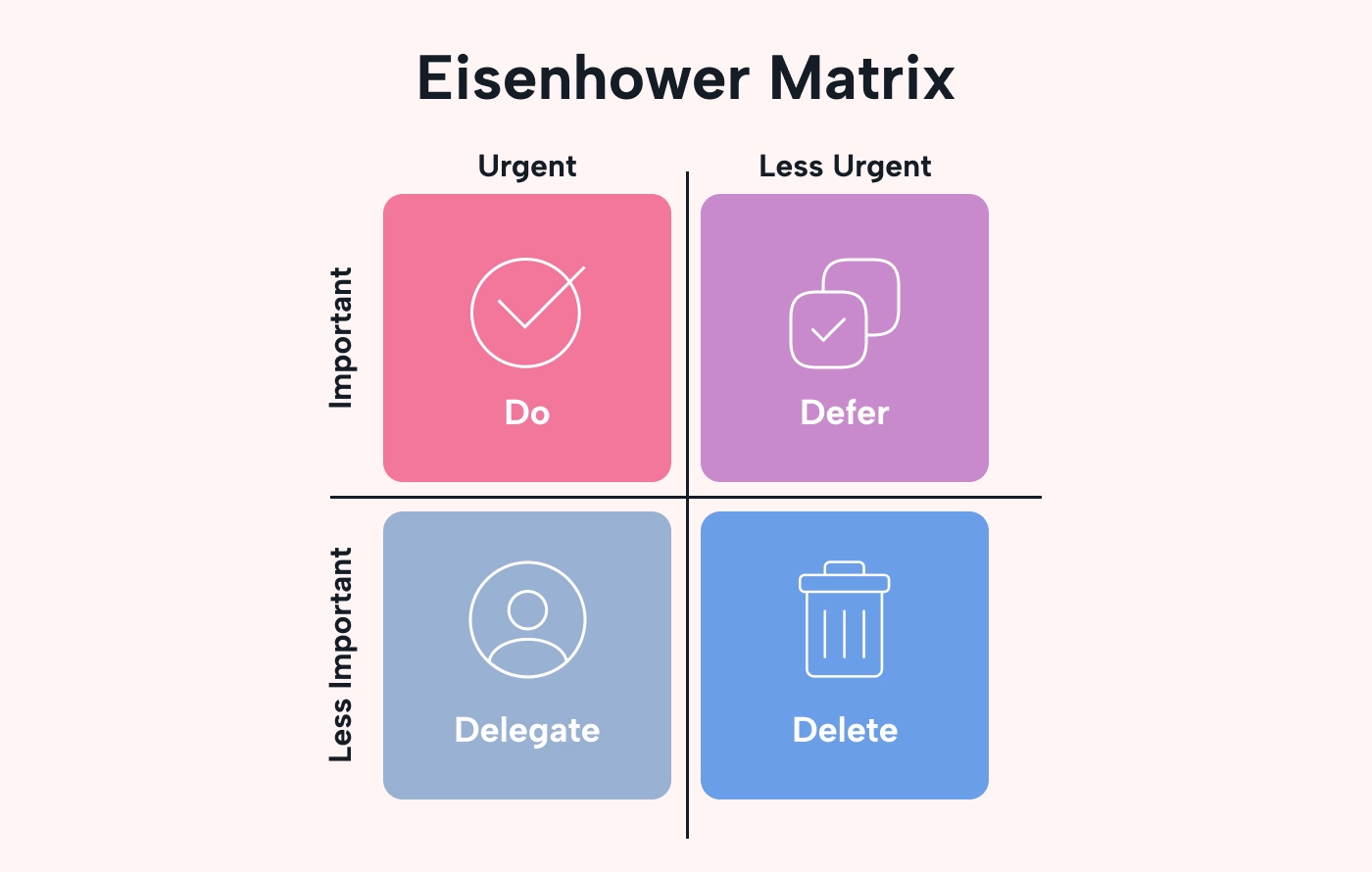 |
To make the most of this technique, start each day or week by categorizing each of your tasks into one of the four quadrants.
The four quadrants are as follows:
- Urgent and important (do these tasks right away)
- Important but not urgent (schedule these tasks for later)
- Urgent but not important (delegate these tasks to others)
- Neither urgent nor important (remove these tasks)
Color-coding the quadrants, such as using red for tasks that are urgent and important, can help you better visualize how your tasks should fit into your workflow.
You can also integrate the Pareto principle, also known as the 80/20 rule. Identify which 20% of tasks are likely to yield 80% of your results. Focus on those tasks.
All of these tasks should be linked to the goals and greater vision you clarified in the last step.
4. Master your use of time
Time management can help you get more done in the same 8-hour day. But it also reduces stress.
The Pomodoro Technique, for instance, breaks up your work into focused, 25-minute increments. At the end of each burst of work is a 5-minute break.
Take things even further and schedule your biggest or most important tasks for when you’re most productive — typically the time of day when you’re naturally most alert and energetic. Less demanding tasks can happen when your energy level is lower.
Or you can practice task batching — grouping similar tasks and tackling them in a single block of time. This technique reduces the amount of time and energy it takes to switch between tasks.
Here are a few more time management tips:
- Use apps to track your time and gain insights into your productivity.
- Focus deeply on one task at a time without distractions.
- Complete tasks that take less than two minutes right away.
5. Exercise your brain
Sustainable productivity is about more than just managing your tasks and time. It’s also about keeping your brain in peak condition.
Exercise your brain by:
- Completing puzzles
- Playing memory games
- Learning an instrument
- Learning a new language
These activities stimulate your brain and don’t require a huge time commitment. Use an app to help you with some language learning for 10 minutes during your lunch hour. Or work on a crossword puzzle during a break between tasks.
The key is to consistently challenge yourself and adopt a growth mindset.
Another way to exercise your brain is through the power of imagination. Intentional daydreaming can be a powerful tool for creativity and problem-solving.
Schedule “imagination breaks” into your workday. Step away from your tasks during these times and let your mind wander. Or you could anchor your thoughts in a visualization, such as an image of you overcoming a specific challenge.
6. Take care of your body
Taking care of our bodies powers our best work.
Physical well-being and productivity are strongly linked. Our nutrition, for instance, influences our energy levels throughout the day.
That being said, everyone is different. Experiment with meal timing and eating different foods to see if there’s any effect on your focus and stamina.
Here are some suggestions:
- Try having smaller, more frequent meals
- Drink more water, especially in the morning
- Emphasize whole foods rich in nutrients
- Avoid processed foods that spike — and then crash — your blood sugar
Physical exercise is another cornerstone of health. Not only is it good for the body, but it can also lift your mood and increase your mental clarity.
Create a routine that feels enjoyable. It doesn’t have to be a long session at the gym. Instead, it could be a short, daily walk at lunchtime or 10 minutes of dancing to your favorite tunes (this works best if you work from home).
7. Make burnout obsolete
Burnout results from a failure to create healthy boundaries. To pursue sustainable productivity, it’s vital to protect your personal time and well-being.
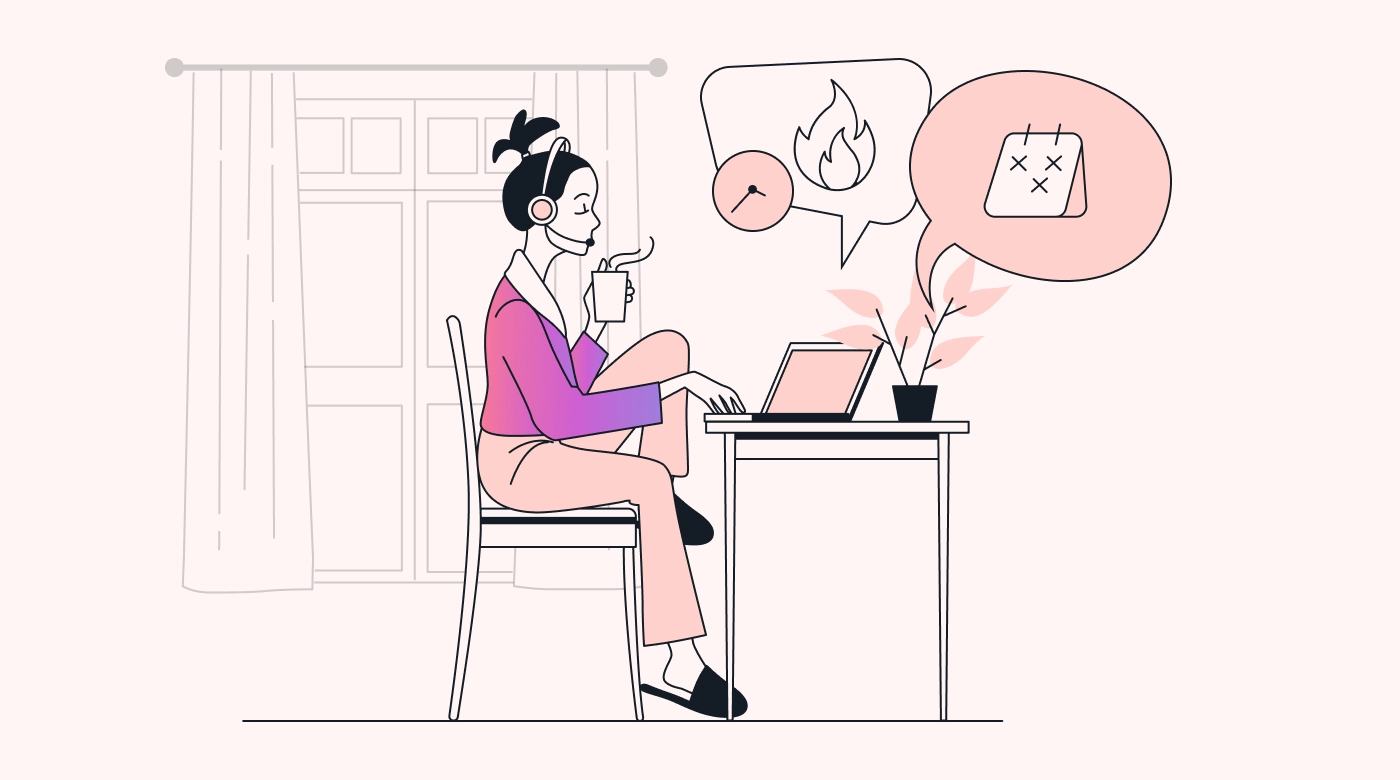 |
Start by defining clear work hours and sticking to them. Set do-not-disturb times on your devices to avoid work-related communications while off the clock.
Especially if you work remotely, it’s important to have a separate workspace so that you’re setting a clear distinction between when you’re at work and when you’re not.
Self-care practices are important in preventing burnout. Here are some ways to engage in it:
- Practice mindfulness
- Participate in regular social activities
- Find new hobbies
- Learn for fun
These activities provide a space for you to recharge, ultimately maintaining your capacity to work effectively and sustainably.
Finally, one of the best ways to avoid the risk of burnout is to know when to say “no.” You can’t do it all. Give yourself permission to delegate a task or remove it if it’s not serving your high-level agenda.
What are the benefits of sustainable productivity?
We’ve talked about what sustainable productivity is and how to go about creating it. Now, let’s discuss the powerful gains that are possible when you implement these strategies.
Increased well-being
One of the immediate benefits of long-term productivity is a significant boost in overall well-being.
Encouraging well-known practices to reduce stress and improve mental health makes your workforce happier and healthier.
Unfortunately, according to a report by the Chartered Institute of Personnel and Development, only about half of organizations take a strategic approach to employee well-being.
This gap shows the opportunities that organizations have. By investing in their staff’s well-being, they can increase team health and job satisfaction.
Better long-term output
Sustainable productivity isn’t just about efficiency; it’s also about the quality of work being produced. Avoiding burnout and using your time better leads to higher-quality outcomes.
Sustainable effectiveness also promotes clearer decision-making, meaning employees aren’t impeded by stress and fatigue and have more mental space to think creatively and develop innovative solutions to problems.
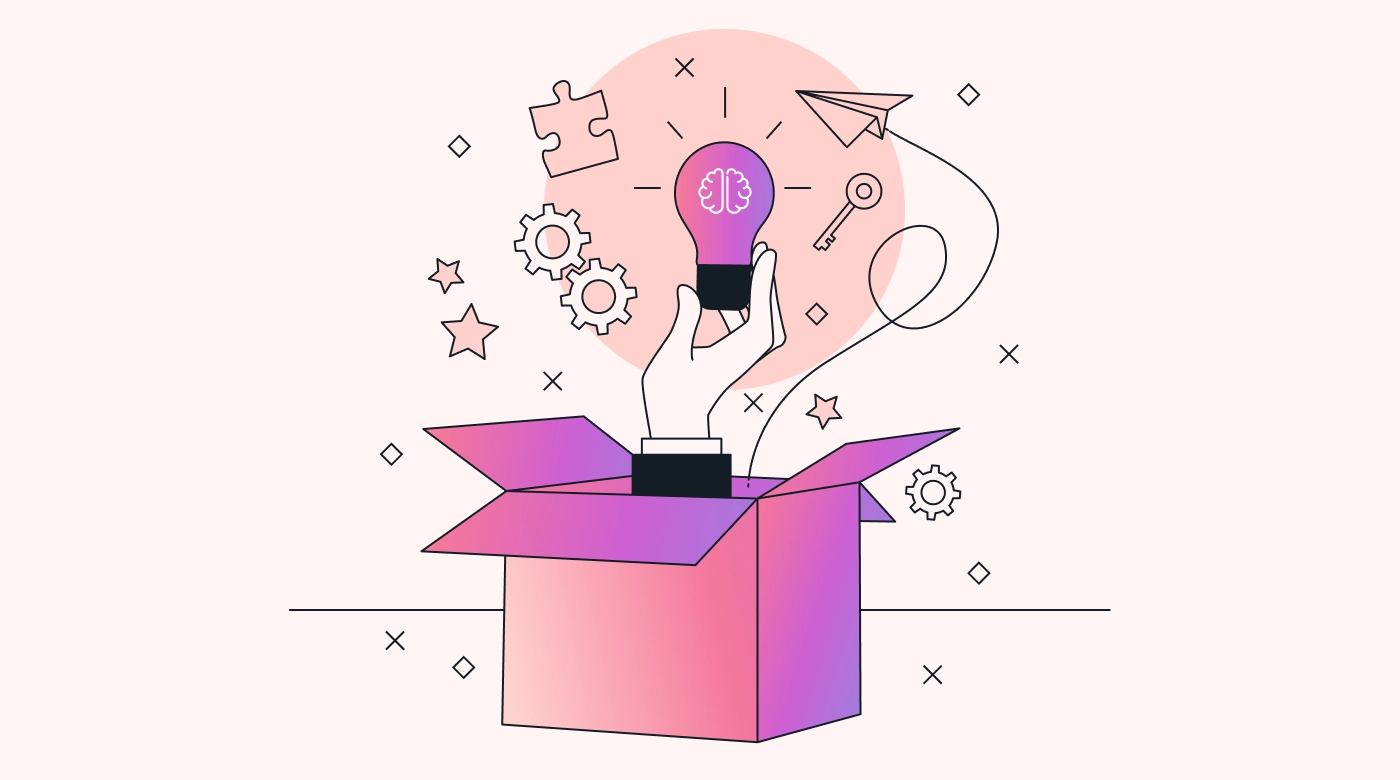 |
For example, a tech company could develop a “Deep Work Wednesdays” policy where, every Wednesday, the team would be encouraged to focus deeply on tasks without interruptions and set aside time for creative brainstorming.
More resilient organizations
When teams are working at their best, individuals and the organization can more quickly adapt to changing circumstances and recover from setbacks.
This means organizations that prioritize sustainable productivity can experience more sustainable growth — not to mention avoid the pitfalls of burnout and high employee turnover.
Case in point: the findings from an American Psychological Association report in 2023. In this report, 95% of workers say it’s important for their employers to respect their work-life balance, and 92% say it’s important for their organization to value their emotional and psychological well-being.
Do this, and your team will be able to focus better, work together well, and be the creative, adaptable team you need for success.
Create sustainable productivity with Motion
We hope you now feel confident in creating the sustainable productivity your team deserves.
Remember: productivity is a long game, so it may not come overnight. However, as you put these strategies into practice, you’ll start to see results.
Motion can help you stay on track. Our AI-powered software manages your tasks for you so you can spend less time thinking about what to do and more time doing. It also builds optimized schedules for whole teams, and can even remind your team members to take breaks so they don’t burn out.
Try Motion for free today.

Jared Posey is a business, SaaS, and productivity freelance writer with a passion for conencting readers with high-quality content. When he's not polishing up a sentence or conducting SERP research, you'll find him making his kids laugh and his wife shake her head.
